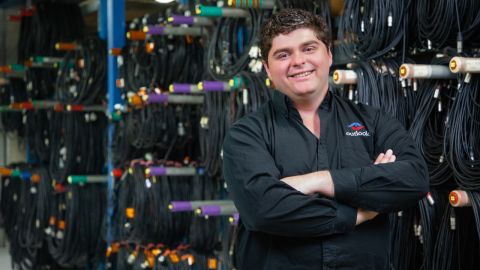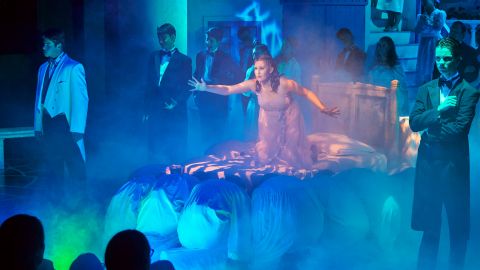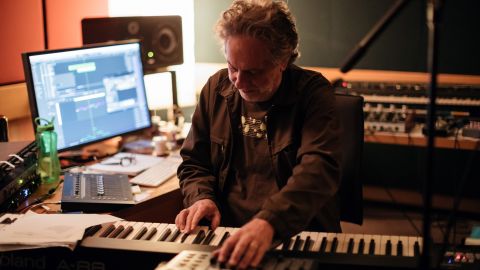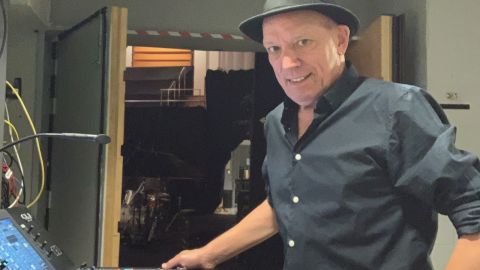Lighting Two Shows in One Venue
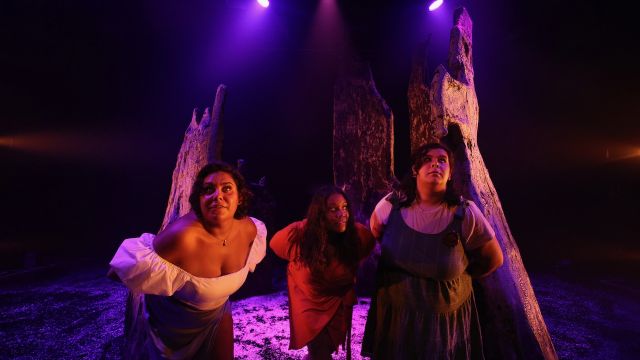
Creating one lighting design and rig is a tricky enough challenge, but Pip Morey, a NIDA Third Year Technical Theatre Stage Management student, had to create one universal grid for two shows.
NIDA’s Festival of Emerging Artists is always frantic, and to make it more challenging I was working on two spectacular shows that were complete opposites. One was a contemporary take on Caryl Churchill’s Hotel, a piece of largely physical work which had a cast of 10, and the other, Burning, a new indigenous work that explored the struggles and trauma indigenous Australians have endured over hundreds of years, told through young eyes (pictured above).
Each piece had obvious lighting needs, such as having a general wash state as well as some face light, but both shows also needed to be able to interact with the lighting, letting it be a part of their stories and not just a complementary factor. Given that the two shows were performed each night, only 40 minutes apart, I had to make the overhead grid as universal as possible. I was lucky enough to have a mixture of tungsten fixtures as well as some LED and moving light fixtures. This allowed me to leave room for experimenting with different colour combinations and shapes when designing the grid.
Hotel explored themes of loneliness and escape. It had ten characters, each of them with their own storylines and motivations. My lighting would need to support them as well as act as a clutch the audience could hold onto throughout the performance.

The first image was shot during the opening sequence. Each character enters the one hotel room, one by one, with their own motivations. The woman in the image immediately walked into ‘the bathroom’ where the bright light comes on. It mimicked a real bathroom light, but also, because of how bright the light was, the audience was almost blinded for a moment. When the human eye became used to its surroundings, audience members were able to look into the mirror and see the woman’s reflection. A cold stare, one of questioning and doubt, which set up her character for the entirety of the production.

My second image shows the scene we called TV, and I like to call it the calm before the storm. It is the last moment before we would explore some of the characters’ own personal hardships and struggles. Although this scene was set late at night, I still wanted the audience to be able to see the characters’ faces and reactions, their interactions with their respective ‘partner’ or the reactions they feel alone in a hotel room, whether it be a positive or negative experience.

This image is from one of the final moments of the play. All the characters but one have left the hotel and we are left with a single woman who has been the most mysterious character thus far.
The lights chosen drained all the colour from the stage. I thought that these would be perfect for the last act, as the character begins to explain her reason for being in the hotel, exploring themes of depression, loneliness and desire to disappear. Colour is so full of emotion and as a lighting designer so much of my job is displaying how the characters are feeling onstage through the lighting. As show ends, essentially all the colour is stripped from the stage, the costumes and even the actor, and we are left with this yellow monochromatic state which just displays different tones of the same yellow.

